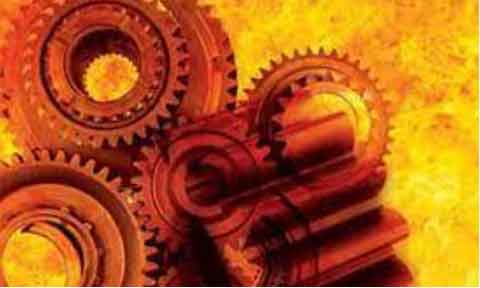Stains and discolorations on the surface of heat-treated components can occur during various heat treatment processes. These stains and discolorations can be visually unappealing and may indicate potential issues with the heat treatment operation or the material itself. Understanding the causes of stains and discolorations is crucial for troubleshooting and implementing appropriate corrective measures. This article explores common types of stains and discolorations that can occur during heat treatment and provides insights into their causes and potential solutions.

1.Scale Formation:
- Cause: Scale formation is a common type of staining that occurs due to the oxidation of the material surface during heat treatment. It appears as a layer of oxide scale on the component.
- Solutions:
- Implement proper heat treatment atmospheres, such as controlled atmospheres or protective gases, to minimize oxidation and scale formation.
- Ensure adequate surface cleaning and removal of contaminants before heat treatment to prevent the formation of thick scales.
- Consider using anti-scaling coatings or compounds to protect the material surface from oxidation.
2.White Layer:
- Cause: The white layer is a phenomenon where a thin layer of white or light-colored material forms on the surface during certain heat treatment processes, such as nitriding or carburizing. It is typically a result of excessive diffusion of nitrogen or carbon into the material.
- Solutions:
- Adjust the process parameters, such as time, temperature, and gas composition, to ensure controlled diffusion and prevent the formation of a thick white layer.
- Optimize the quenching process to remove the excess diffused elements and minimize the thickness of the white layer.
- Consider post-treatment processes, such as grinding or polishing, to remove the white layer and restore the desired surface condition.
3.Decarburization:
- Cause: Decarburization refers to the loss of carbon content from the surface layer of the material during heat treatment, leading to a reduced hardness and compromised properties.
- Solutions:
- Implement proper heat treatment atmospheres with low oxygen content to prevent excessive oxidation and decarburization.
- Ensure accurate temperature control during heating to minimize the exposure of the material to high temperatures for extended periods.
- Consider using protective gases or modified atmospheres to prevent decarburization and preserve the carbon content in the surface layer.
4.Quench Stains:
- Cause: Quench stains occur as localized discolorations on the component surface due to variations in cooling rates during quenching. This can result from inadequate agitation, non-uniform part geometry, or improper quenching media.
- Solutions:
- Optimize the quenching process parameters, including quenching media selection, agitation, and cooling rates, to achieve uniform and controlled cooling.
- Ensure proper part placement and fixture design to minimize variations in cooling rates and reduce the likelihood of quench stains.
- Consider implementing post-quench cleaning processes, such as washing or pickling, to remove any residual quenching media or stains.
5.Corrosion and Staining:
- Cause: Corrosion and staining can occur on the surface of heat-treated components when exposed to corrosive environments or inadequate protection.
- Solutions:
- Implement appropriate post-heat treatment surface treatments, such as protective coatings or passivation, to enhance corrosion resistance.
- Store and handle heat-treated components in controlled environments to prevent exposure to moisture or corrosive agents.
- Implement regular inspections and maintenance to detect and address any corrosion issues promptly.
Stains and discolorations in heat treatment can result from various factors, including oxidation, excessive diffusion, inadequate cooling, and corrosion. Understanding the causes of these stains and discolorations is essential for troubleshooting and implementing effective solutions. By optimizing heat treatment parameters, controlling atmospheres, improving quenching processes, and implementing appropriate surface treatments, manufacturers can minimize and prevent stains and discolorations, ensuring high-quality heat-treated components.
